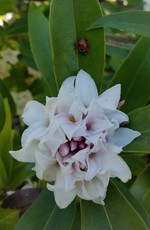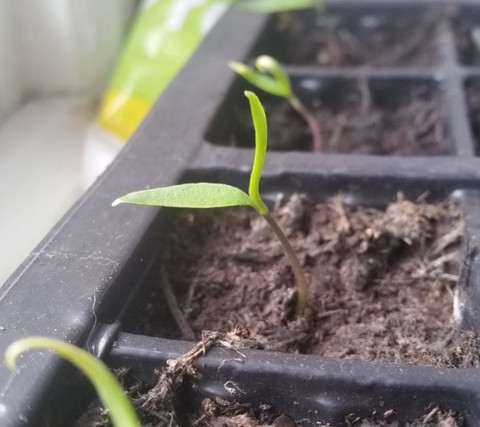The Hare & The Moon
- Clare
- Mar 3, 2021
- 3 min read
Last Saturday marked the second full moon of 2021 and the final full moon of Winter. Native Americans knew this as the "Snow Moon", "Hunger Moon" and "Bone Moon" as it appeared during the cold Winter months, when hunting was hard and food was scarce. However, despite these rather sombre connotations, February's full moon also signifies light at the end of the tunnel as it heralds the coming Spring.
It's easy to understand why our ancestors were so obsessed with the moon's cycle and why lunar images have influenced romantics and artists for centuries; the moon forms a comforting presence in the night sky and brings a sense of constancy that unites all of us. It helps to stabilize our climate and control changing sea levels and has inspired children, philosophers and explorers for generations.

A full moon takes place when the Earth sits directly between the sun and the moon, and occurs every 29.5 days. March's full moon is set to occur on the 28th of the month and is also known by a variety of names, such as "Worm Moon", "Crust Moon" and "Crow Moon" (as the cawing of crows marked the end of Winter). The Anglo-Saxons also termed it the "Lenten Moon" as it denotes the date of Easter (which always falls on the Sunday after the first full moon to follow the Spring Equinox). The Daily Telegraph provides some more moon facts at: Full moon dates for 2021, including March's Worm Moon (telegraph.co.uk)
One animal that has long been associated with the moon and its cycle is the lovely hare. Many cultures describe seeing the outline of a hare or rabbit on the moon's surface and this has given rise to a number of legends. In China, for example, the hare is a companion to the Goddess Chang'e, whilst in Ugrian mythology, the moon goddess Kaltes-Ekwa was a shape-shifter who frequently took the form of a hare. The association between the Anglo-Saxon Spring goddess Eostre and the hare is also believed to play a large part in the origins of Christian Easter celebrations.

(Image by Lucy Grossmith: see Heart To Art | Lucy Grossmith | Suffolk artist illustrator| Prints & paintings (heart-to-art.com)).
The term "mad as a March hare" comes from the animal's frenzied activity at the start of the breeding season and, contrary to popular belief, the "boxing" hares that are commonly seen in fields during early Spring are usually female hares (termed "Jills" or does) warding off amorous males ("Jacks" or bucks). Young hares, which (unlike rabbits) are able to fend for themselves very soon after birth, are called leverets (from the old French word "lièvre", meaning hare).
In our own garden, birdsong is becoming increasingly louder and hungry bees and ladybirds are starting to emerge from their winter shelters in the hunt for food. The heather in a neighbour's garden was covered in dozens of bees earlier this week, all greedily foraging for pollen and nectar. It reminded me that I have been meaning to acquire some autumn and winter flowering heather plants for our garden for some time, and I ordered a small selection when I got home.
Daisies and celandines are appearing all over the lawn, the daffodils are finally all open and the muscari (grape hyacinth) flowers are pushing their way up through last year's leaves. Scent is coming from the viburnum and Daphne, and the forsythia and quince buds look set to burst.
The first of my chilli, lemon grass and sweet pea seeds have sprouted and these are currently crowding my window sills as I delay putting them outside whilst there is still a good chance of frost. I planted more of each during the week, and also some statice and bunny tail grass seeds. I will resist the urge to plant anything else until we are well into March, not least as I am running out of room to put the trays!
As we rush into Spring, there is suddenly so much to do in the garden and its a race to keep ahead of the weeds. However, the sunshine that appeared at the weekend was a welcome respite to the rain and wind we have had of late and I told myself that it wont be long before the garden is buzzing with insects and filled with flowers again.
"Over the land freckled with snow half-thawed, the speculating rooks at their nests cawed. And saw from elm tops, delicate as flower of grass, What we below could not see, Winter pass." Edward Thomas
"March winds and April showers bring forth May flowers" English proverb



















Comments